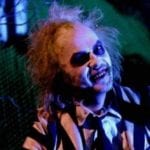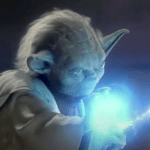 Weird Stuff
Weird Stuff  Weird Stuff
Weird Stuff  Our World
Our World 10 Ways Your Christmas Tree Is More Lit Than You Think
 Movies and TV
Movies and TV The 10 Coolest Stars to Set Sail on The Love Boat
 History
History 10 Things You Didn’t Know About the American National Anthem
 Technology
Technology Top 10 Everyday Tech Buzzwords That Hide a Darker Past
 Humans
Humans 10 Everyday Human Behaviors That Are Actually Survival Instincts
 Animals
Animals 10 Animals That Humiliated and Harmed Historical Leaders
 History
History 10 Most Influential Protests in Modern History
 Creepy
Creepy 10 More Representations of Death from Myth, Legend, and Folktale
 Technology
Technology 10 Scientific Breakthroughs of 2025 That’ll Change Everything
 Weird Stuff
Weird Stuff Ten Bizarre Facts About The Doge Meme
 Our World
Our World 10 Ways Your Christmas Tree Is More Lit Than You Think
 Movies and TV
Movies and TV The 10 Coolest Stars to Set Sail on The Love Boat
Who's Behind Listverse?

Jamie Frater
Head Editor
Jamie founded Listverse due to an insatiable desire to share fascinating, obscure, and bizarre facts. He has been a guest speaker on numerous national radio and television stations and is a five time published author.
More About Us History
History 10 Things You Didn’t Know About the American National Anthem
 Technology
Technology Top 10 Everyday Tech Buzzwords That Hide a Darker Past
 Humans
Humans 10 Everyday Human Behaviors That Are Actually Survival Instincts
 Animals
Animals 10 Animals That Humiliated and Harmed Historical Leaders
 History
History 10 Most Influential Protests in Modern History
 Creepy
Creepy 10 More Representations of Death from Myth, Legend, and Folktale
 Technology
Technology 10 Scientific Breakthroughs of 2025 That’ll Change Everything
Top 10 Recasts in Major Movies
Movie studios today place great value on sequels, prequels, and franchises, milking as many dollars as possible from a property before it’s time to move on. So there’s a significant demand to see the same characters, in the same continuity, return again and again. And when something threatens to get in the way of this happening, producers aren’t shy about recasting.
While a new actor stepping into an existing role can be a recipe for disaster, it can also provide an experience so seamless between the two performances as to almost go unnoticed. Whether because the original actor fell out with the studio, demanded too much money, or even passed away during filming, these are 10 of the very best instances where a character has transitioned between actors, and the show has gone on.
Related: 10 Stars Who Got Jacked for Comic Book Movies
10 Chewbacca: Star Wars
One of the defining characters of the original Star Wars trilogy, Chewbacca, proved you don’t need to make sense to be adored. Standing at 7’3″ (2.21m), original Chewie and all-around legend Peter Mayhew towered over the rest of the cast. He quickly became an icon of the franchise while never speaking a word.
For the first of the sequel trilogy, The Force Awakens (2015), released nearly 40 years after the original movie, an elderly Mayhew shared the role with Finnish actor and former basketball player Joonas Suotamo. As Mayhew struggled from the physical toll his height had taken over many years, Suotamo took over by himself for the subsequent two films.
Thankfully, Mayhew stayed on as a consultant and helped the young actor learn the ticks and quirks of the role, fine-tuning his performance and teaching him to keep his chest high and tilt his head in just the right way to access the idiosyncratically inquisitive side of the Wookiee. As a result, the transition between actors for The Last Jedi (2017) is seamless, with Suotamo nailing the mannerisms and quirks of the galaxy’s beloved walking carpet.[1]
9 Jean Grey: X-Men
Every major franchise has, at some point, delved into the past to tell what filmmakers consider an essential part of the story, initiating a blanket recasting of all established characters while maintaining the same continuity. Few, however, have managed this so successfully as the X-Men movies.
Any number of the young X-Men recasts could have made this list, but when forced to pick one, Sophie Turner’s turn in Famke Janssen’s shoes is the tightest. Turner donned the skin-tight suit, armed herself with the character’s array of wild hand gestures, and, despite being stuck in one imperfect (X-Men Apocalypse, 2016) and one franchise-ending bad movie (Dark Phoenix, 2019), played Jean Grey true to her portrayal in the original X-Men trilogy.
Of course, there is no higher praise than that of the original actor, and Janssen commended Turner for her abilities. However, Janssen originally sought to return to the series as Jean Grey herself, alongside her younger version, just as the rest of the original cast did in Days of Future Past (2014). However, the producers she pitched this idea to never called back…[2]
8 Jennifer Parker: Back to the Future
Marty McFly’s (Michael J. Fox) adventures in the DeLorean are as essential to ’80s pop culture as big hair and Michael Jackson. Still, while the success of Back to the Future (1985) paved the way for sequels, the cast returning was another matter.
When Back to the Future Part II (1989) rolled around, several of the original cast had moved on, but rather than write them out, the production replaced them and kept steaming ahead. Crispin Glover tends to get the press when it comes to replacing established characters—with his character George McFly appearing via the use of movie trickery—but Marty’s girlfriend Jennifer was recast right under our noses. Given the actresses’ physical resemblance and the hair and costume departments’ finishing touches, a lot of people didn’t notice when Elisabeth Shue replaced Claudia Wells.
Wells left the role when her mom was diagnosed with cancer, but she almost didn’t get to keep the part in the first place. ABC, whom Wells was in contract with at the time of filming the first movie, initially refused to share her with Amblin, and she was briefly replaced before being reinstated when Fox was cast in the lead.[3]
7 Thanos: Guardians of the Galaxy
Of all the Marvel Cinematic Universe’s villains, none is as ubiquitous as the Mad Titan, Thanos. The driving force for most of the overarching plot elements across the first decade of MCU movies and a regular of the post-credit sequences, his plans came to a head in Avengers: Infinity War (2018) and Endgame (2019). Yet, somewhere along the way, he changed significantly.
So seamless was the transition between his post-credit cameos that many fans didn’t realize Thanos was recast from Damion Poitier in The Avengers (2012) to Josh Brolin in every film after that, beginning with the Guardians of the Galaxy (2014).
Poitier, who had both the right physical and personal presence for the big purple warlord, was cast by Avengers director Joss Whedon. However, when the time came to expand the role, the studio wanted a bigger name. Brolin initially didn’t want the part, but after perusing a “bible” of studio-supplied details, comics, scripts, and other paraphernalia on the character, he was hooked.[4]
6 Victoria: The Twilight Saga
The Twilight Saga may be dead and buried, but the vampire romance franchise—based on Stephenie Meyer’s bestselling books—remains an indelible part of late-aughts/early-2010s pop culture. Despite the fluctuating quality of the films’ storylines, an array of recognizable characters kept audiences fixated on the series, allowing budgets to expand and bolder casting choices to be made.
Originally played by Rachelle Lefevre in Catherine Hardwicke’s relatively small-budget Twilight (2008), Victoria is one of a trio of vampires who stalk the town of Forks. After the series’ “good vampires,” the Cullens, slay her mate James (Cam Gigandet), she develops a vendetta spanning the quintology’s first three films.
Despite Lefevre’s performance suiting the movies’ somber yet hammy style, Bryce Dallas Howard took over the role for the third film, Eclipse (2010), which had nearly double the budget of the first. Production company Summit announced the recasting due to scheduling conflicts with Lefevre’s 10-day stint on Canadian drama Barney’s Version (2010).
However, the actress contended that they were simply seeking any opportunity to get rid of her. Given Howard was a more recognizable star, having recently featured in 2009’s Terminator: Salvation, Lefevre’s logic is difficult to dispel, but Howard nevertheless carried the character through seamlessly.[5]
5 Lieutenant Saavik: Star Trek
A decade after the original show was canceled, Star Trek transitioned to the silver screen with 1979’s Star Trek: The Motion Picture. The success of this feature spawned five more films in the same continuity and reinvigorated the property for audiences across the world, ushering in a return to television and a golden age of Trek in the 1990s.
What made the films successful was the cast, many of whom returned from the original show, and others who became icons in their own right. Kirstie Alley was one such icon, playing Vulcan Lieutenant Saavik, who rose to fan-favorite status in Star Trek II: The Wrath of Khan (1982). Given her popularity with audiences, it was a no-brainer to bring the character back for The Search for Spock (1984).
Despite seeking to expand her part with considerably more screentime, the studio offered Alley less money than she made on the first one, which—in her words—”wasn’t like it was a massive amount.” As a result, she declined to return, Robin Curtis took over as Saavik, and fans got more of what they wanted.[6]
4 Lando Calrissian: Star Wars
Since acquiring the property from George Lucas in 2012, Disney has produced more Star Wars content than ever, expanding into live-action television and standalone films. But for every gambit that pays off, there are another two that fail.
Solo: A Star Wars Story (2018) is, unfortunately, the latter. While fans had been calling for a young Han Solo movie since the release of the original trilogy, this was not what they had in mind. The movie was lambasted for being business-minded, uninspired, and disrespectful to the source material. It underperformed at the box office as a result, making $393 million against a $275 million budget (which, after marketing, distribution, and other costs, is a loss).
But for everything that Solo gets wrong, it does one thing right: Lando Calrissian. Donald Glover gave this younger version of the smooth-talking space schemer pitch-perfect dramatic weight, flair, charisma, and humor, matching the original Lando from Billy Dee Williams’s performance. Despite this, Williams didn’t put a lot of stock in the younger actor, saying that, at the end of the day, “There’s only one Lando Calrissian.” We beg to differ.[7]
3 Albus Dumbledore: Harry Potter
Despite Hogwarts’ Headmaster Albus Dumbledore being recast multiple times, most recently in the Fantastic Beasts series, the best recasting of all was back in the third Harry Potter film, when the franchise was still finding its feet.
One of the most significant recasts in fantasy cinema, Michael Gambon donned the cloak and cap to play Dumbledore when his predecessor, Richard Harris, died prior to filming Harry Potter and the Prisoner of Azkaban (2004). Gambon, now also sadly departed, was a master craftsman of stage and screen, and any qualms young viewers had about this new Dumbledore were extinguished like a candle with a magical wave of the hand.
But Gambon almost didn’t get the part, as the studio initially looked to another great wizard of the time: Gandalf. Producers approached Ian McKellen to take over the role. But given prior negative comments that original actor Harris had made against McKellen’s acting capabilities, he felt he couldn’t take over from an actor he knew disapproved of him.[8]
2 Dr. Loomis: Halloween
For David Gordon Green’s Halloween revival, he disregarded all the poorly received films between John Carpenter’s 1978 original and his 2018 trilogy-opener. This allowed him to establish his own continuity and, with his second film, Halloween Kills (2021), even return to the original.
Doing a flashback for central antagonist Michael Myers (James Jude Courtney/Nick Castle/Airon Armstrong) wasn’t a challenge, given he almost exclusively wears a mask, but reproducing his psychiatrist Dr. Sam Loomis was another thing entirely. Somehow, though, they managed it.
Flashing back to the night of Myers’s first rampage, Dr. Loomis appears in a scene that never existed in the original movie, where he captures and nearly executes Myers. The resemblance between Dr. Loomis’s original actor, Donald Pleasence, and new actor, Tom Jones Jr., is so striking that it appears as if Pleasence himself returned from the grave.
But Jones’s appearance was the result of nothing more than good fortune. His actual job in the trilogy was set construction coordinator, and it was only after the assistant director spotted his uncanny resemblance to the character during a crew meeting that he was cast in the part.[9]
1 Tony Shepard: The Imaginarium of Doctor Parnassus
As with every Terry Gilliam movie, The Imaginarium of Doctor Parnassus (2009) blends fantasy with foreboding reality, this time centering on a traveling theatre troupe in contemporary London. Doctor Parnassus, the troupe’s leader, is an immortal whose bet with the Devil has dismal consequences for his everlasting life.
While the film presents us with a weird and wonderful assortment of characters, its focus is on the exploits of the rakish Tony Shepard (Heath Ledger), a disgraced philanthropist and recent addition to the troupe. Acting as an audience surrogate, he moves through fantasy worlds, each of which changes his appearance.
It wasn’t originally meant to be this way, but Ledger died before completing the movie. Determined not to abandon his or Ledger’s work, Gilliam reached out to not one but three actors to take over the role—Johnny Depp, Jude Law, and Colin Farrell. The recasting is all but seamless, with the four stars’ looks, alongside the wardrobe and make-up departments, conspiring to make it so we often don’t know who we’re watching at any given moment. To add kindness to complement, Depp, Law, and Farrell also donated their acting fees to Ledger’s daughter.[10]








